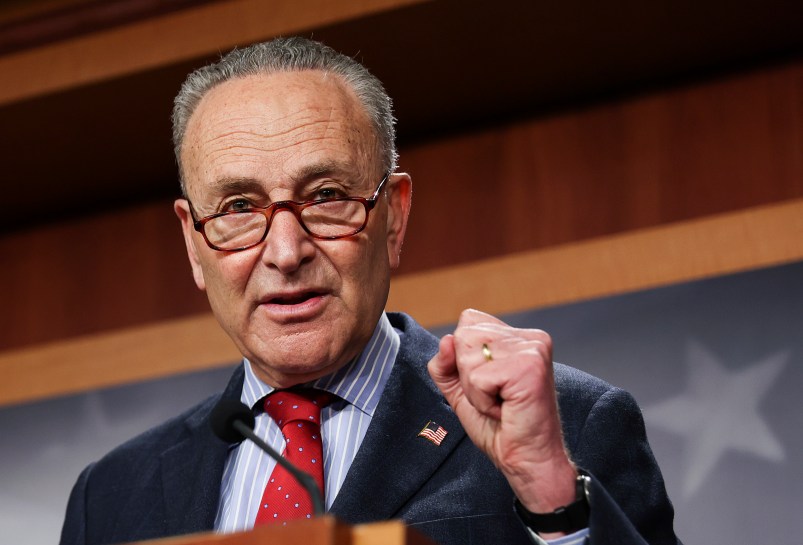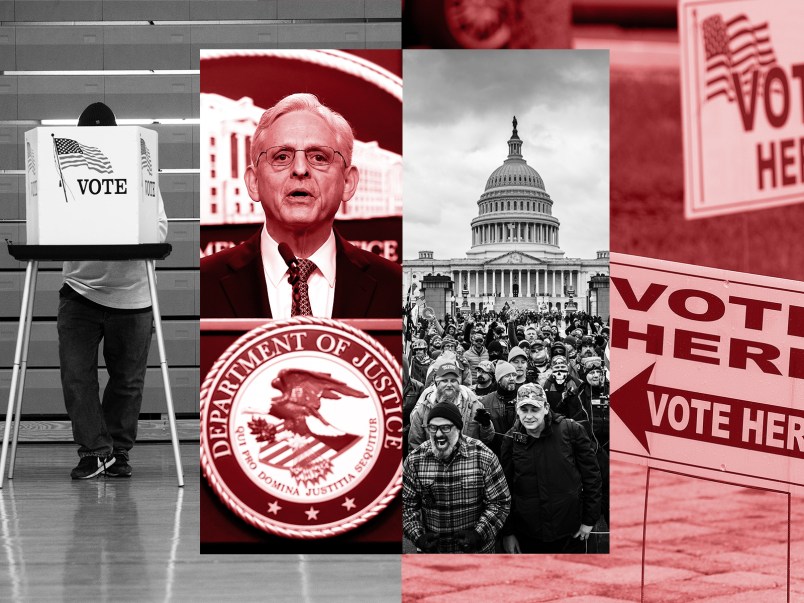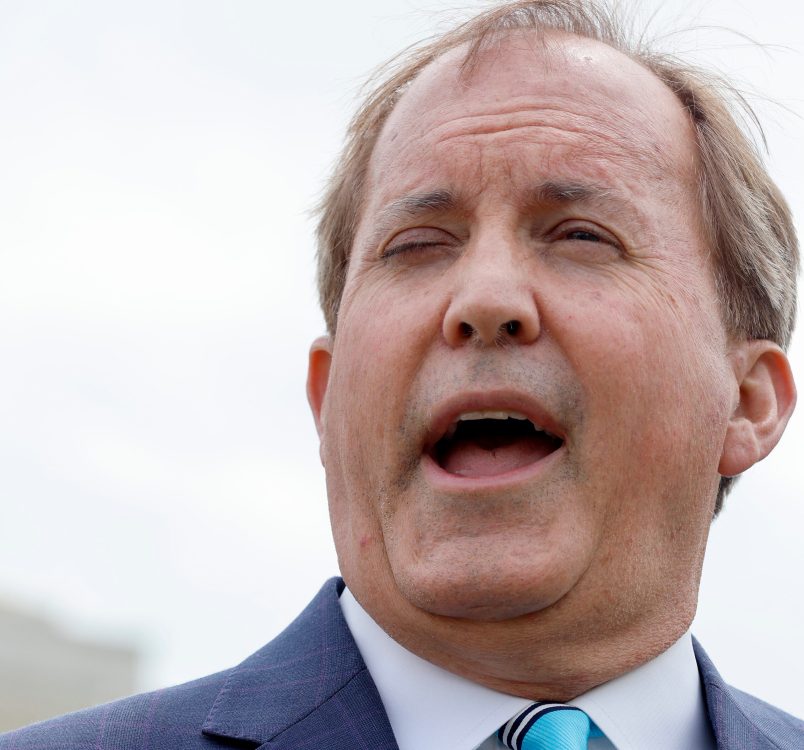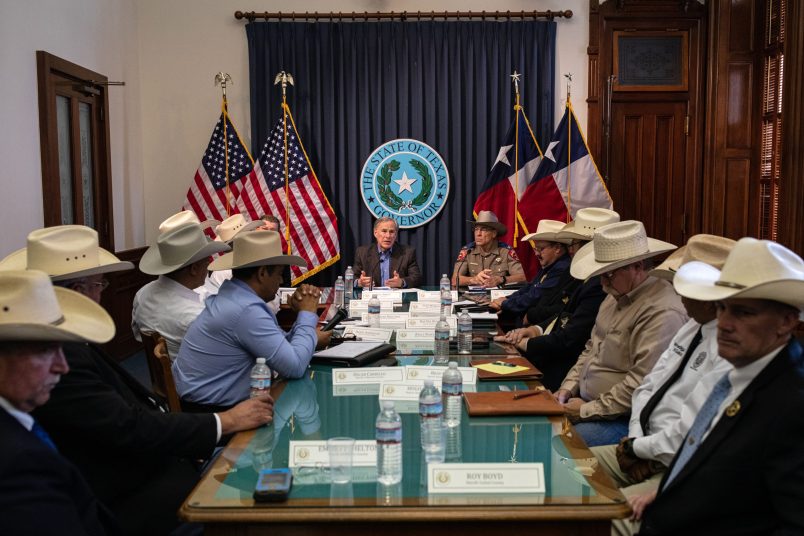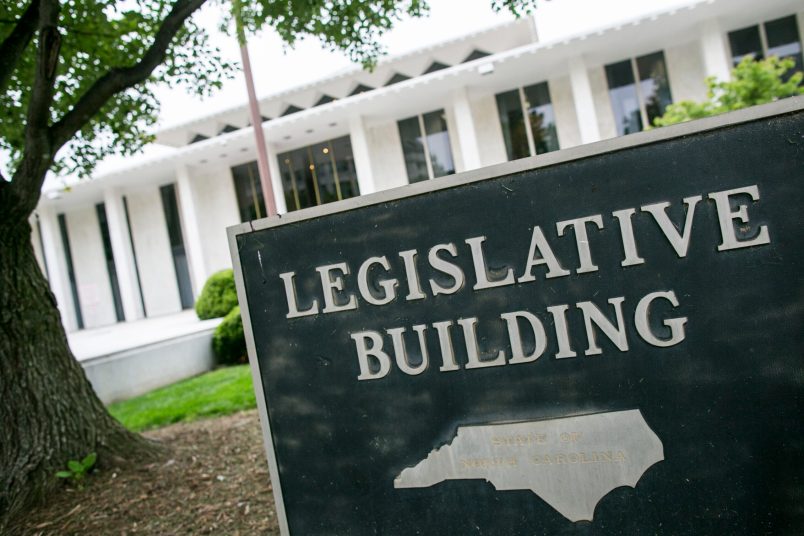Senate Majority Leader Chuck Schumer’s (D-NY) office put out a statement Monday evening declaring success in his gambit to circumvent the filibuster and squeeze more opportunities to pass bills through reconciliation out of a clause in the Congressional Budget Act of 1974.
By his reading, “revising” a budget resolution — like the 2021 budget vehicle Democrats used to pass the American Rescue Plan — provides another vehicle to pass more legislation through reconciliation. He shared that theory with Senate Parliamentarian Elizabeth MacDonough, and said Monday that she had agreed with his interpretation.
The parliamentarian was a purely political obstacle. Her job is to advise the Senate, and Democrats could just overrule her if they didn’t like her interpretation of the law. But as we saw with the minimum wage fight, Democrats’ power to ignore her and political will to do so are two very different things.
Here’s what we know (and what we don’t) about this potential sea change in how the Senate will operate for the foreseeable future:
We only know what Schumer’s office told us.
MacDonough’s ruling itself has not become public; we only have the summary of her ruling from the team with an interest in getting her to agree with Schumer’s interpretation of section 304 in the law.
And the three-line statement has some hedging: “While no decisions have been made on a legislative path forward using Section 304 and some parameters still need to be worked out, the Parliamentarian’s opinion is an important step forward that this key pathway is available to Democrats if needed.”
Those “parameters” may refer to how many times this gambit can be used. Can the budget resolution be revised once? More than once? Infinite times? These logistical details will determine how much Democrats have to try to squeeze into each reconciliation vehicle, and how much opportunity they have to legislate before the 2022 midterms.
“Details still need to be litigated,” a Democratic aide told TPM of those specifics. “And we still need to litigate whether we can use it for the things we want to use it for.”
So far, because Democrats could only count on two reconciliation vehicles this year (the 2021 budget resolution leftover from Congress not passing one last year, and the 2022 one), we’ve seen Democrats champion gigantic, multi-part bills. The American Rescue Plan was $1.9 trillion and covered everything from stimulus checks to a one-year child tax credit expansion. The infrastructure package, which is expected to be split into two parts and span physical roads and bridges to health care, will be around $2 trillion. Quite aside from austerity hawk griping, having more vehicles and more flexibility would allow Democrats to craft narrower bills and run on each of them as a distinct legislative win.
Infrastructure part 1 would no longer be the last guaranteed chance to get legislation passed before the midterms.
Accordingly, having this interpretation okayed takes some pressure off of the first part of the infrastructure package. Democrats would no longer have to crowbar every possible, tangentially budget-related proposal into this omnibus. That could ease negotiations.
It would also smooth the way for infrastructure part 2, which is expected to include health care and childcare provisions. Without these extra reconciliation vehicles, the prospects for getting 10 Republicans on board to pass the second half of the package — expected to include things like a permanent version of the ARP’s expanded child tax credit — seemed dim.
This would likely kick the filibuster fight down the road.
If Democrats suddenly have this other pathway to pass legislation, the filibuster fight might be elbowed out of the spotlight again. So far, Democrats have ordered their legislative priorities such that things they can pass through reconciliation come first, and things that will almost certainly be filibustered second.
The conditions to force filibuster reform or abolition will likely require pressure, both from constant Republican obstruction and the stark reality that Democrats will simply not be able to pass their legislative priorities with it in place.
Many Democrats who fall to the right of the party’s most strident anti-filibuster crusaders have framed their interest in changing or getting rid of it as directly tied to a) keeping legislative promises to their constituents and b) refusing to let Senate Minority Leader Mitch McConnell (R-KY) stall their agenda from the minority. If they can legislate productively through reconciliation, those pressure points will lessen, leaving moderate Democrats likely less inclined to go ahead with a rules change many of them are uneasy about.
This doesn’t solve all of Democrats’ problems.
As the filibuster fight gets booted down the road, so too does the legislation that needs to pass through regular order. While there’s definitely some gray area about what can and can’t be passed through reconciliation — the Byrd rule lets senators object to provisions that don’t change the level of spending or revenues, or that do so only in an “incidental” way — great chunks of Democrats’ legislative agenda are not eligible. That likely includes things such as policing reforms, gun control, voting rights legislation, and a ban on discrimination due to sexual orientation.
That fact, coupled with the potential lessened pressure on Democrats to make a decision on the filibuster, has anti-filibuster activists worried:
The Parliamentarian’s ruling on reconciliation is great but doesn’t change the fact that Democrats must either end or reform the filibuster, or HR1 and other voting rights bills will die. The ruling allows for more vehicles but doesn’t expand the scope of what they can contain.
— Adam Jentleson ? (@AJentleson) April 6, 2021
The centrists remain powerful, and Joe Manchin remains king.
More legislation eligible to move through reconciliation means that each Democratic member in the evenly split chamber has enormous power. That power center usually rests with Sen. Joe Manchin (D-WV) who represents a deep red state and is more conservative than the rest of the caucus on certain issues. But really, the dynamic applies to any member, since they would all have the power to sink, or threaten to sink, any reconciliation-bound bill that omits their priorities.
Democrats stayed remarkably unified while passing the COVID-19 relief package, with the exception of some last-minute Manchin vacillating on the unemployment insurance benefit. That process was infused with a unique urgency from the looming mid-March cliff when millions would lose their unemployment benefits, which left a very tight timeline and little time for haggling.
We’ll see if Democrats remain as united when they’re not deploying direct aid for people buffeted by a deadly pandemic and accompanying economic hardship. They’ll still have plenty of other incentives to move fast and get a lot done, though. They want accomplishments to run on in the midterms and are certainly all too aware of the historical precedent of the party with a trifecta losing a chamber in the midterms. As it is, the slim House majority is already in existential danger from redistricting alone. And as we saw from Rep. Alcee Hasting’s (D-FL) passing on Tuesday, the majority is already tenuous.





